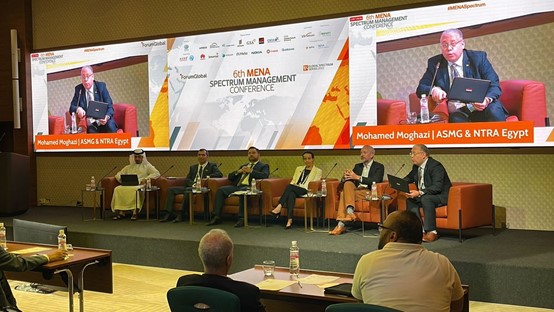Technology Conference Spotlights Spectrum Allocation as 5G Rollouts Rise

The 6th MENA Spectrum Management Conference that was held last week gathered regulators, experts, telecom companies, and other ICT players to discuss key spectrum topics for the MENA region and beyond. Held in a hybrid format, over a hundred attendees convened in-person and virtually from different countries among the regions.
The conference opened with discussions regarding the future of the 6GHz band in the Arab region, the outlook for development regarding the use of the C-band and how emerging technologies meet the needs of existing users. It was also an opportunity to understand the future of the 470-694 MHz band while balancing the needs of all key users and the path beyond 5G, delivering the spectrum to power the next generation of wireless connectivity.
With the rapid growth of the demand for spectrum due to the surge of new services, spectrum management will be critical to ensuring consistent, affordable, and equitable connectivity. As such, reaching a consensus on spectrum management is key to addressing these forthcoming challenges.
“Radio spectrum is the most important element in the telecom sector. The experiences in UAE show that we have to have a proper frequency plan and regulations in order to accommodate the future need of the telecom sector,” explained Tariq Al Awadhi, Chairman of Arab Spectrum Management Group (ASMG).
“The ASMG team in the Arab region are much active with ITU. We have a strong team in ASMG and we’re all proud of it. Now the preparation for WRC is going very well. In the last three days, we had good meetings and updated our positions for agenda items during WRC-23. A good thing is that our team is already participating in working groups and study groups in ITU-R, and submitted various contributions.”
“This is a good participation,” he concluded.
“We have reached an important stage of the WRC-23 preparation. ITU-R working parties and task groups are completing the technical studies for each agenda item,” said Mario Maniewicz, Director of Radiocommunication Bureau, ITU
With WRC-23 approaching, positive engagement on mid-band solutions for IMT will provide vital support to the harmonization of spectrum and give clear technical guidance for regulators. Coordinated regional decisions will lead to a WRC which enables the future of 5G and supports wider broadband take-up by increasing capacity and reducing costs.
Asmae Lachhab, Senior Marketing and Solution Manager Huawei Northern Africa echoes these requirements by underlining that “5G development is gearing up globally, most of the countries have taken 5G in a strategic position to enable the national digitalization in coming decade. It is highly recommended that governments implement favorable industry and spectrum policies to facilitate the evolution of 5G in the MENA region.”





